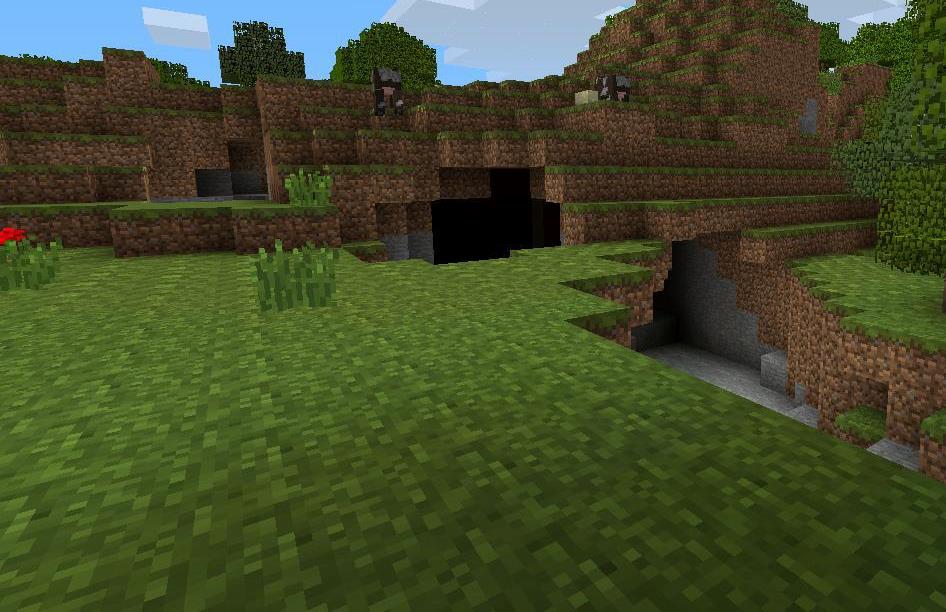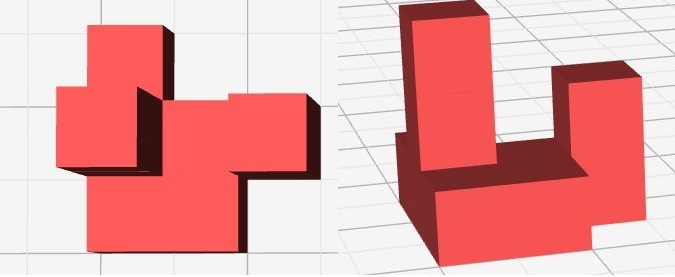House Building 【规律】
来源:互联网 发布:fc2live软件破解版域名 编辑:程序博客网 时间:2024/04/29 19:01
House Building
Time Limit: 2000/1000 MS (Java/Others) Memory Limit: 262144/262144 K (Java/Others)
Total Submission(s): 0 Accepted Submission(s): 0
Problem Description
Have you ever played the video game Minecraft? This game has been one of the world's most popular game in recent years. The world of Minecraft is made up of lots of1×1×1![]()
blocks in a 3D map. Blocks are the basic units of structure in Minecraft, there are many types of blocks. A block can either be a clay, dirt, water, wood, air, ... or even a building material such as brick or concrete in this game.

Figure 1: A typical world in Minecraft.
Nyanko-san is one of the diehard fans of the game, what he loves most is to build monumental houses in the world of the game. One day, he found a flat ground in some place. Yes, a super flat ground without any roughness, it's really a lovely place to build houses on it. Nyanko-san decided to build on an×m![]()
big flat ground, so he drew a blueprint of his house, and found some building materials to build.
While everything seems goes smoothly, something wrong happened. Nyanko-san found out he had forgotten to prepare glass elements, which is a important element to decorate his house. Now Nyanko-san gives you his blueprint of house and asking for your help. Your job is quite easy, collecting a sufficient number of the glass unit for building his house. But first, you have to calculate how many units of glass should be collected.
There aren![]()
rows and m![]()
columns on the ground, an intersection of a row and a column is a 1×1![]()
square,and a square is a valid place for players to put blocks on. And to simplify this problem, Nynako-san's blueprint can be represented as an integer arrayc![]() i,j
i,j![]() (1≤i≤n,1≤j≤m)
(1≤i≤n,1≤j≤m)![]()
. Which c![]() i,j
i,j![]()
![]()
indicates the height of his house on the square of i![]()
-th row and j![]()
-th column. The number of glass unit that you need to collect is equal to the surface area of Nyanko-san's house(exclude the face adjacent to the ground).

Nyanko-san is one of the diehard fans of the game, what he loves most is to build monumental houses in the world of the game. One day, he found a flat ground in some place. Yes, a super flat ground without any roughness, it's really a lovely place to build houses on it. Nyanko-san decided to build on a
While everything seems goes smoothly, something wrong happened. Nyanko-san found out he had forgotten to prepare glass elements, which is a important element to decorate his house. Now Nyanko-san gives you his blueprint of house and asking for your help. Your job is quite easy, collecting a sufficient number of the glass unit for building his house. But first, you have to calculate how many units of glass should be collected.
There are
Input
The first line contains an integer T![]()
indicating the total number of test cases.
First line of each test case is a line with two integersn,m![]()
.
Then![]()
lines that follow describe the array of Nyanko-san's blueprint, the i![]()
-th of these lines has m![]()
integers c![]() i,1
i,1![]() ,c
,c![]() i,2
i,2![]() ,...,c
,...,c![]() i,m
i,m![]()
![]()
, separated by a single space.
1≤T≤50![]()
1≤n,m≤50![]()
0≤c![]() i,j
i,j![]() ≤1000
≤1000![]()
First line of each test case is a line with two integers
The
Output
For each test case, please output the number of glass units you need to collect to meet Nyanko-san's requirement in one line.
Sample Input
23 31 0 03 1 21 1 03 31 0 10 0 01 0 1
Sample Output
3020Figure 2: A top view and side view image for sample test case 1.
恩,题目大意就是说,给你一地图,上面每个位置的数字表示该位置上面垒了几个小正方体,然后问组成的图形的表面积为多少,一个小正方体的一面的面积为1。然后我用总
的减去重叠的,然后重叠的就是在一个平面上的左右若有小正方体则有一面被掩盖,和竖直方向上 n 个小正方体,则有(n-1 )被掩盖,因为我每个位置都有访问,所以没乘2.
表忘记减去与地面全面接触的面积
#include<cstdio>#include<cstring>#define maxn 51#include<algorithm>using namespace std;int gra[maxn][maxn];int t,n,m,sum;int dir[4][2]={0,1,0,-1,1,0,-1,0};int judge(int x,int y){ if(x<1||x>n||y<1||y>m) return 0; if(!gra[x][y]) return 0; return 1;}int dfs(int x,int y){ int nx,ny,cnt=0; if(gra[x][y]>0) cnt=2*(gra[x][y]-1); for(int i=0;i<4;++i) { nx=x+dir[i][0]; ny=y+dir[i][1]; if(judge(nx,ny)) cnt+=min(gra[x][y],gra[nx][ny]); } return cnt;}int main(){ int num,k; scanf("%d",&t); while(t--) { sum=num=k=0; scanf("%d%d",&n,&m); for(int i=1;i<=n;++i) { for(int j=1;j<=m;++j) { scanf("%d",&gra[i][j]); if(gra[i][j]) k++; num+=gra[i][j]; } } for(int i=1;i<=n;++i) { for(int j=1;j<=m;++j) { sum+=dfs(i,j); } } sum=num*6-sum-k; printf("%d\n",sum); } return 0;}
0 0
- House Building 【规律】
- hdu 5538 House Building
- HDU 5538 house building
- 【HDU】 5538 House Building
- HDU 5538 House Building
- HDOJ 5538 House Building
- HDU5538 House Building
- HDU-5538 House Building
- HDU 5538 House Building
- 航院5538:House Building
- HDU 5538 House Building
- 航院5538:House Building
- hdoj 5538 House Building
- 杭电5538House Building
- VJ 122106 C-House Building
- hdu5538 House Building--立方体表面积
- HDU-5538 House Building(暴力)
- hdu 5538 House Building 基础题
- Xcode7开发iOS记录(一)
- jquery.cookie() 方法的使用(读取、写入、删除)
- leetcode系列(58)Pow(x, n)
- spring中AOP3
- iOS--UIImageView的使用方法
- House Building 【规律】
- (C++ )矩阵
- Django form 文件上传
- ASP.NET之Gridview图解
- Set Up Apache2 With mod_fcgid And PHP5 On CentOS
- springMVC使用注解操作HttpSession中的对象
- bestcoder#61hdu5523Game
- js 开始时间与结束时间比较大小---->yyyy-MM-dd hh:mm:ss 字符串转换成时间戳
- 疯狂到相信自己能够改变世界,工程师就是这么一群人



